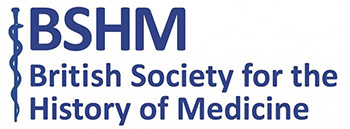One might not automatically recognise the image below as that of an early version of the medical stethoscope. It certainly looks very different today. This blog focuses on the invention of this instrument, synonymous with the medical profession, over 200 years ago.

Laennec-type monaural stethoscope, France, 1851-1900. Credit: Science Museum, London. CC BY.
Where did it all begin?
The story of the invention of the stethoscope begins with a young French physician in Paris, René Laennec. It was in 1816 that Laennec was called to see a rather fat and buxom young woman with a ‘diseased heart’. Feeling awkward, embarrassed and improper at putting his ear so close to this woman’s chest in an attempt to listen to her heart, Laennec sought to find an alternative method. He described his predicament and later actions in the medical text De l’Auscultation Médiate, published in August 1819:
I happened to recollect a simple and well-known fact in acoustics, … the great distinctness with which we hear the scratch of a pin at one end of a piece of wood on applying our ear to the other… I rolled a quire of paper into a kind of cylinder and applied one end of it to the region of the heart and the other to my ear, and was not a little surprised and pleased to find that I could thereby perceive the action of the heart in a manner much more clear and distinct than I had ever been able to do by the immediate application of my ear.’
Laennec modified this method of a rolled up piece of paper to make a wooden cylinder, measuring 25cm by 2.5cm. He called this piece of equipment a ‘stethoscope’, the name derived from the ancient Greek stethos meaning ‘chest’, and skopein meaning ‘look at’. The stethoscope became an essential item in Laennec’s medical bag and he utilised it to listen to both the heart and lungs of his patients.
Reception
Although a few physicians resisted the introduction of the stethoscope, maintaining that it was best to listen only with one’s ear, the vast majority of the medical profession embraced its use. The invention quickly spread over Europe in the early 1820s and the design was further developed and improved upon. By the end of the nineteenth century, this wooden instrument had morphed into something more akin to the modern-day stethoscope. Flexible tubing, first made out of rubber, and then plastic, made the stethoscope both easier to use and transport; whilst binaural earpieces improved the quality of the sound for the listener. The stethoscope works by transmitting acoustic pressure waves from the chest-piece through the hollow tubes to the listener’s ears. Today, there are even more advanced electronic stethoscopes which amplify body sounds improving further the sound transmitted.

A 19thcentury stethoscope with a bell-shaped end. Credit: Wellcome Collection. CC BY.
The meaning of the stethoscope
The significance of a stethoscope in the twenty-first century cannot be under-estimated. It confers identity and, to a certain degree, status. Its wearer is automatically assured to be a member of the medical profession. It implies trust, understanding and knowledge. In this way, Laennec’s stethoscope is incredibly valuable, both from a diagnostic and symbolic perspective.
Further Reading
‘The story of Renee Laennec and the first stethoscope,’ Past Medical History. Available at: https://www.pastmedicalhistory.co.uk/the-story-of-rene-laennec-and-the-first-stethoscope/, accessed 9/3/19.
‘Stethoscope,’ Brought to Life – Exploring the History of Medicine. Available at: http://broughttolife.sciencemuseum.org.uk/broughttolife/techniques/stethoscope, accessed 9/3/19.
Lucy Havard





